Finding the Math in Good Night, Gorilla
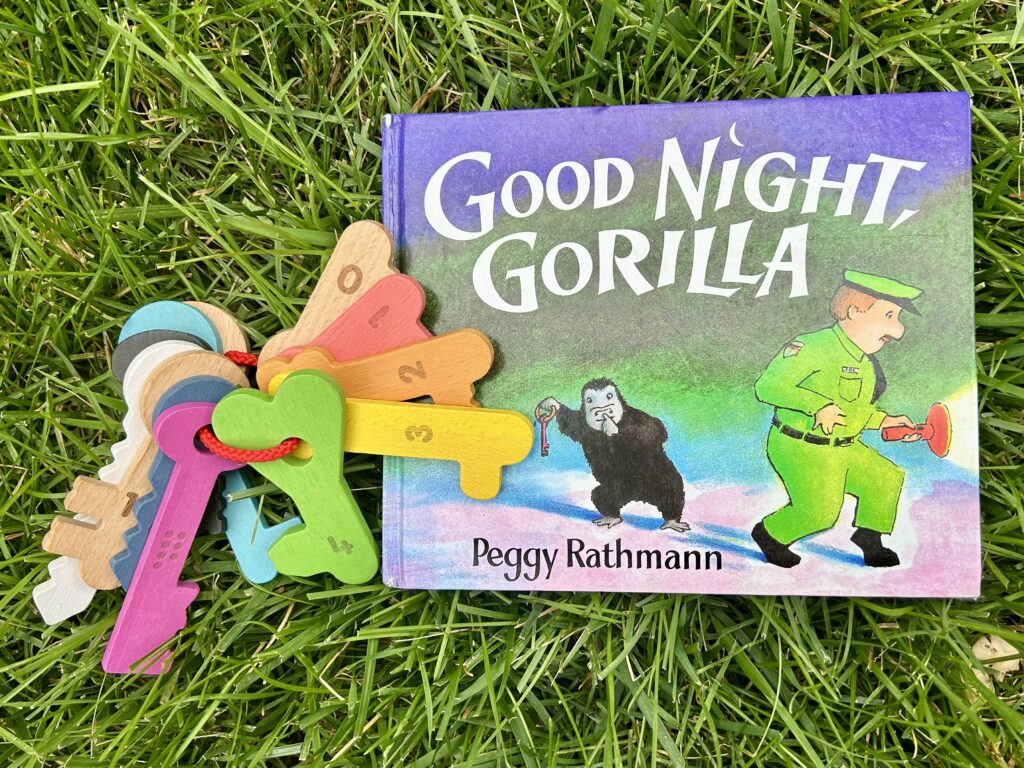
Have you read Peggy Rathman's classic children's book, Good Night, Gorilla, about bedtime at the zoo, when a mischievous gorilla steals the keys from the sleepy night zookeeper and frees all of his animal friends?
By popular demand, Goodnight Gorilla has become a permanent fixture in our classroom library. Only 34 pages long, with just 10 words, it is, without a doubt, the most requested read-aloud story at our preschool.
Every time that we revisit this charming tale, the children discover something new, which prompts a new set of questions and a new wave of learning. This book may be short on words, but it's full of hidden surprises!
Best of all, it's filled with so many early math concepts that every reading turns into a joyful early math adventure. Goodnight gorilla, hello math!
Have you ever noticed that the key Gorilla uses to unlock each cage is the same color as the cage? This color-matching exercise helps foster a foundational understanding of matching and attributes.
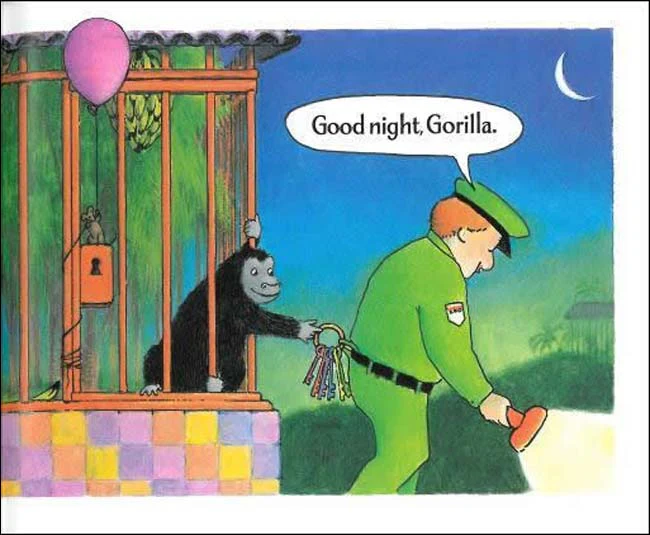
Each animal’s cage is a different color, and the tiles beneath each cage have different colors and patterns. I encourage the children to focus on these variations to introduce them to the concept of patterns and repetition.
As children acquaint themselves with these early math concepts, they also sharpen their observational skills. While studying each illustration, they may discover that the cages are stocked with different toys and food items.
Gorilla's cage, for example, is outfitted with a bike and a tire swing. The mischievous great ape's best friend, Mouse, is nibbling on a string attached to a balloon. A closer inspection reveals a Curious George storybook and an enormous bunch of bananas hanging overhead. Elephant's cage contains a Babar the Elephant soft toy, a blue ball decorated with orange elephants, and plenty of peanuts littering the cage floor and spilling out onto the pavement.
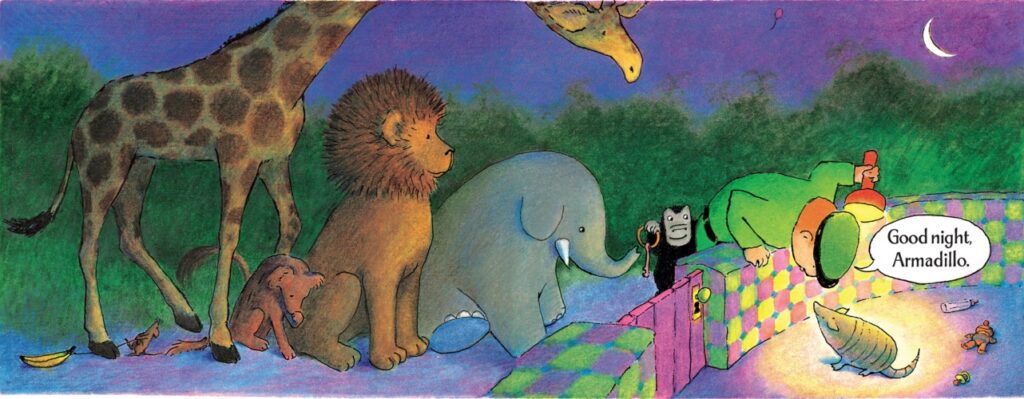
But why does Armadillo's cage contain an Ernie soft toy? One child suggests that it might be because Armadillo and Ernie both have stripes, which makes sense to the rest of us!
As Gorilla makes his getaway, Mouse, the banana, and the balloon follow along. This gives children plenty of opportunities to spot them on each page and make observations about objects in the cage, behind the zookeeper, and above the houses.
This activity helps the children develop their spatial reasoning skills, which are linked to future achievement in STEAM disciplines such as science, technology, engineering, art, and math.
Goodnight Gorilla unfolds in a specific sequence. When children begin to understand this order—how the gorilla steals the keys, unlocks each cage, and follows the zookeeper home in the order that the animals are released—they become acquainted with sequencing, a foundational skill that they will later use for math and reading.
There are also many opportunities for your child to count the animals and learn about ordinal numbers, which indicate each animal's position in a series, such as first, second, third, or fourth.
By reinforcing the fact that the final number in the counting sequence also represents the total number of animals, you can introduce early learners to concepts such as cardinality and one-to-one correspondence.
To practice subtraction, note that Gorilla leaves a key in the lock each time he unlocks a cage door, which leaves one less key on the ring.
You can also help build your child's positional and spatial vocabulary as he or she follows the balloon on the string, which appears on nearly every page. Watch that balloon get smaller and smaller as it moves up into the night sky until it is just a pink speck next to the moon.
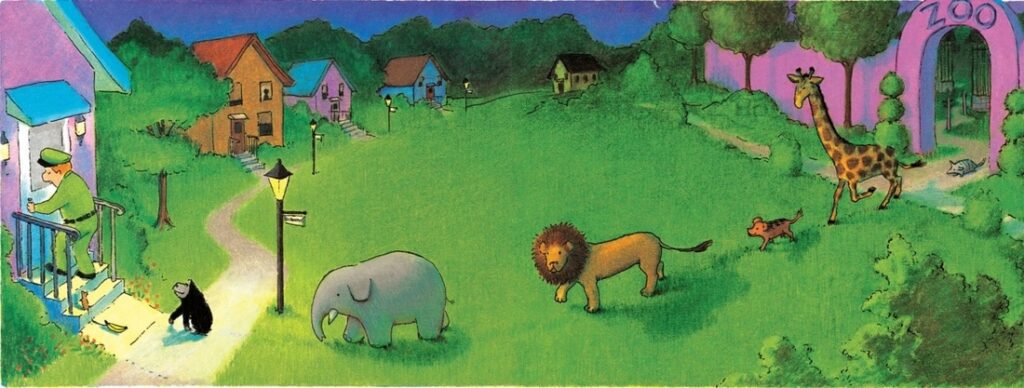
That's a lot of joyful math learning!
But there's so much more to explore. Ask the following questions to help your child focus on other details:
- Point to the houses and ask: "Do the houses in the neighborhood seem surprised as the animals walk back and forth to and from the zoo?"
- Direct your child's attention to the people watching from the house windows and ask: "Have you noticed that the number of people watching from the windows changes? Do you think this a nightly occurrence?"
- Point out the speech bubbles in the black-as-night bedroom scene and ask: "Do the speech bubbles match the sizes and locations of the hiding animals?"
- As your child's powers of observation grow, ask harder questions such as:
- Can you find the zookeeper's broken belt loop?
- Do you see the banana-shaped moon on the cover?
- Do the times on the bedroom clock change as the night wears on?"
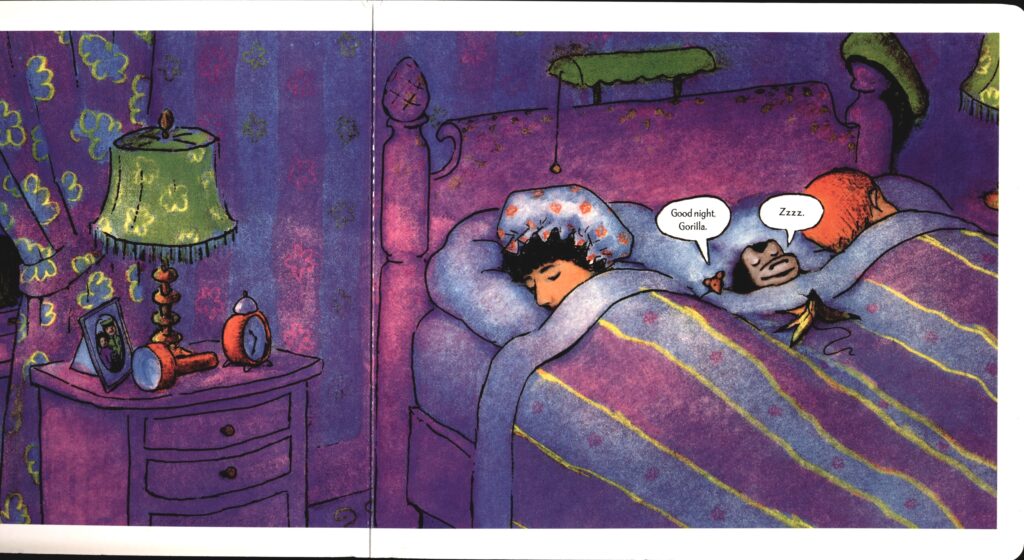
Don't forget to remind your child to keep an eye out for Mouse and his banana; they appear on almost every page.
On the final page, Gorilla and Mouse snooze in the zookeeper's bed after enjoying a late-night snack.
Ask: "Who ate the banana? Gorilla or Mouse?”
The next time you read this classic, search for these little details on every page to help sharpen your little one's observational skills!